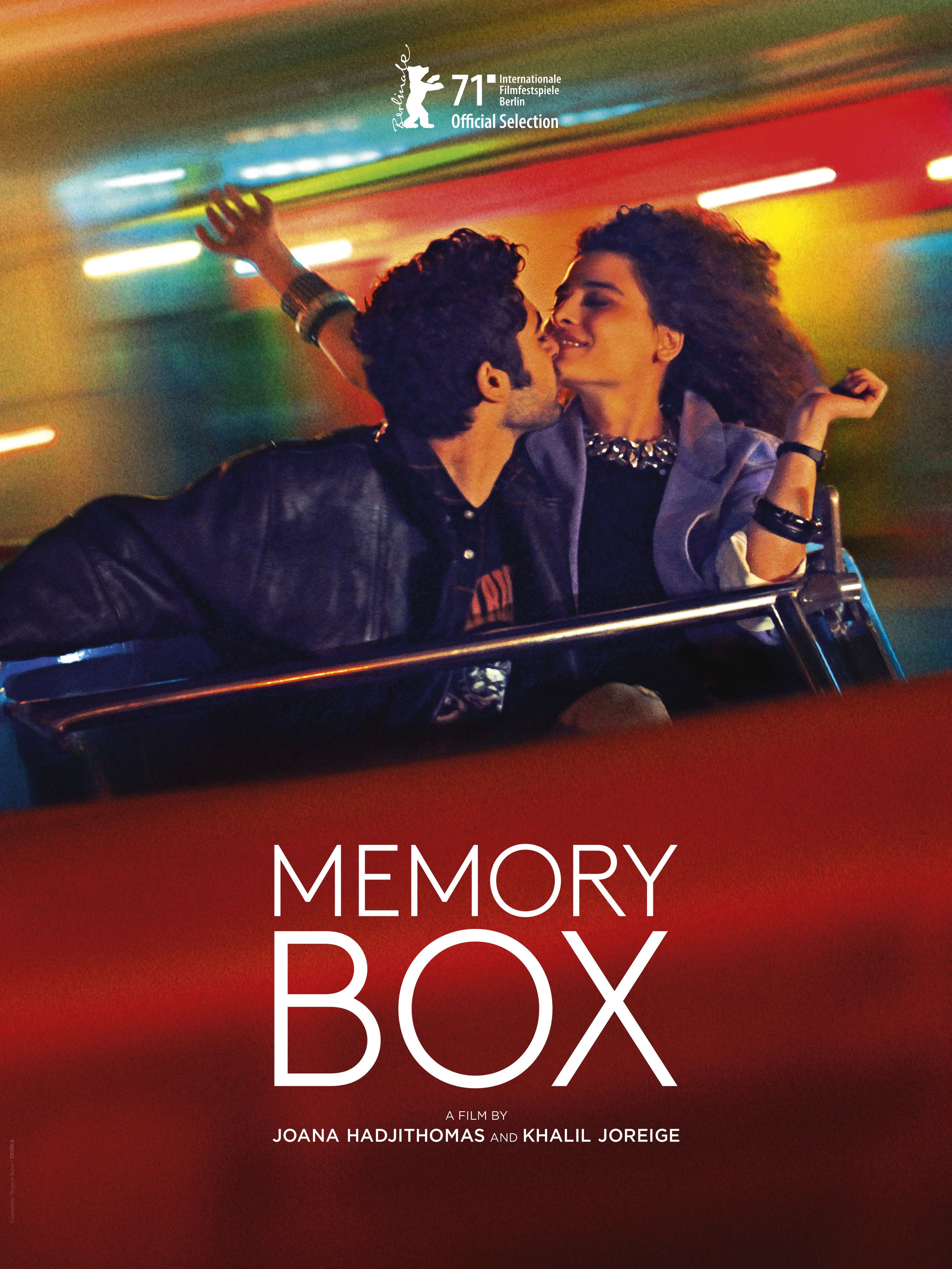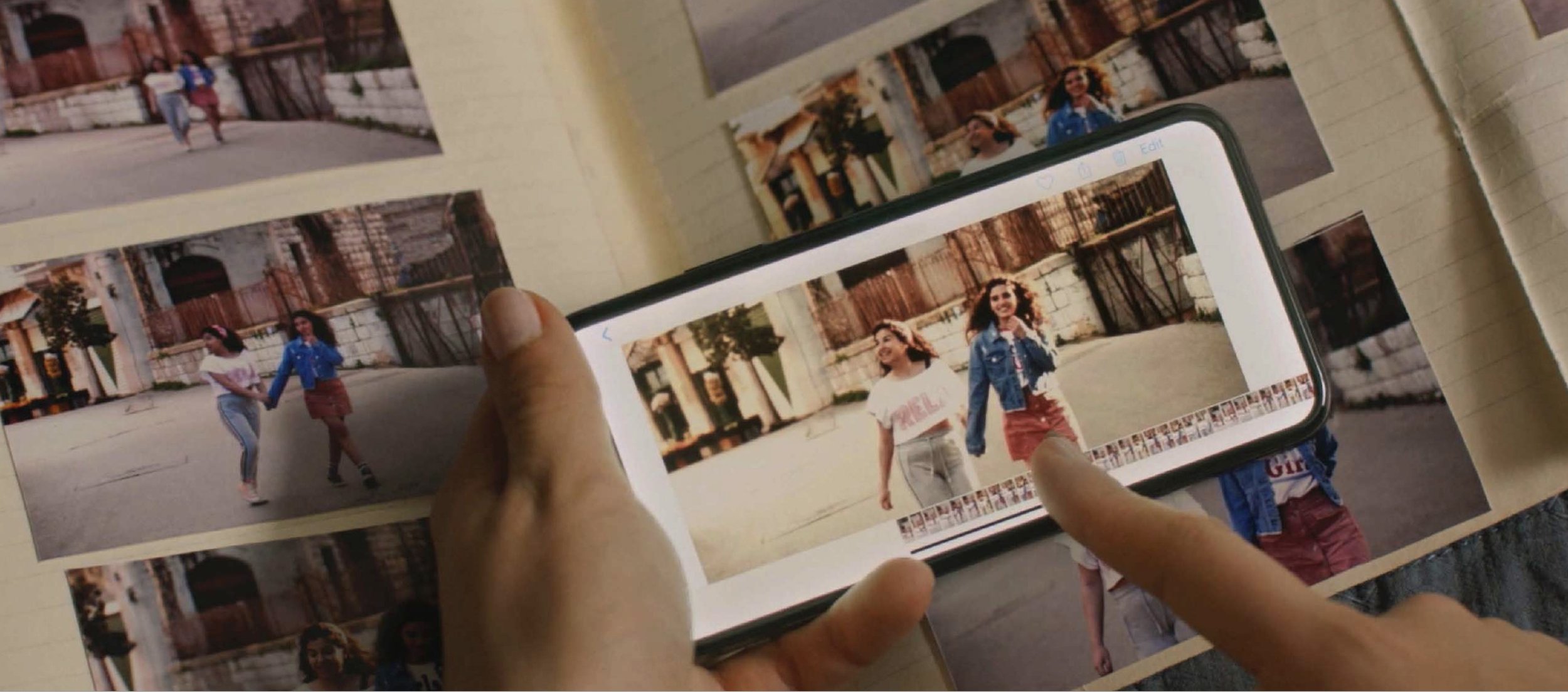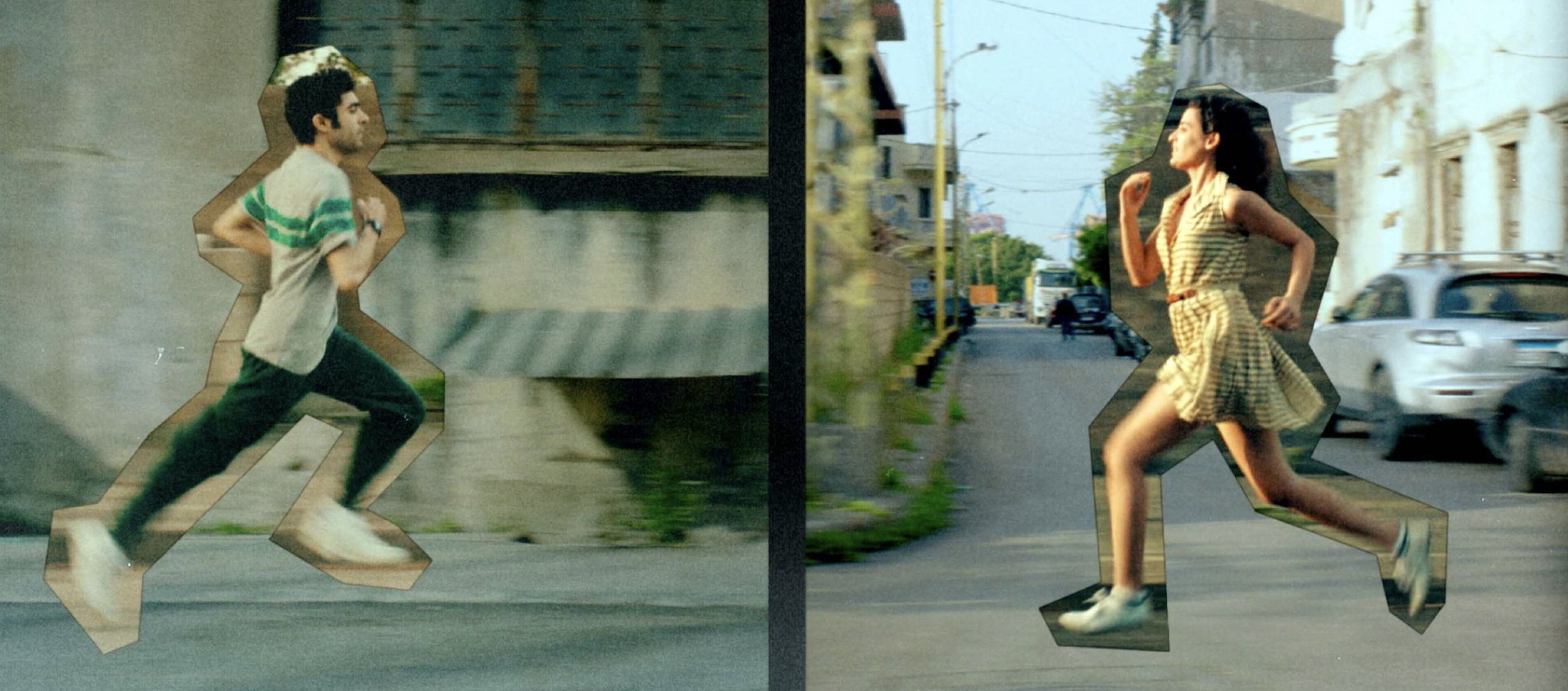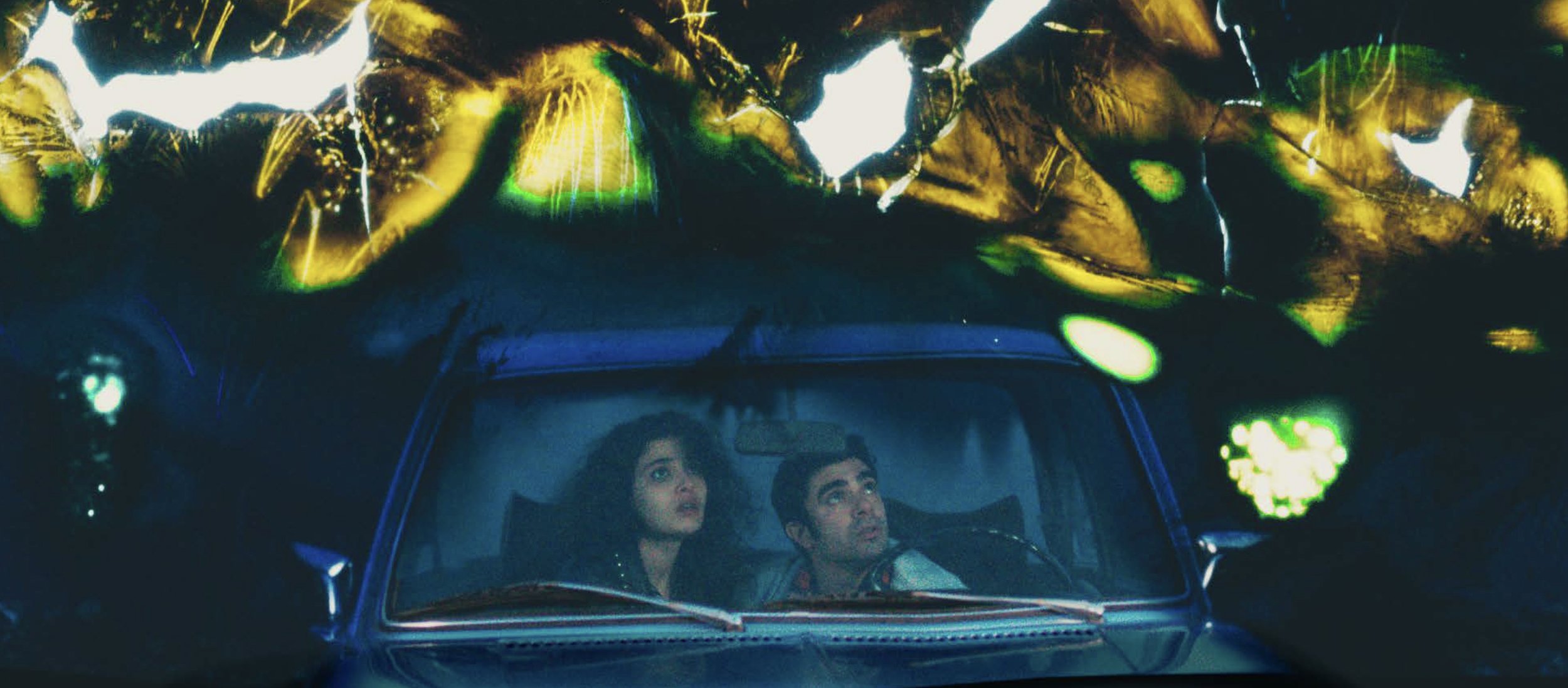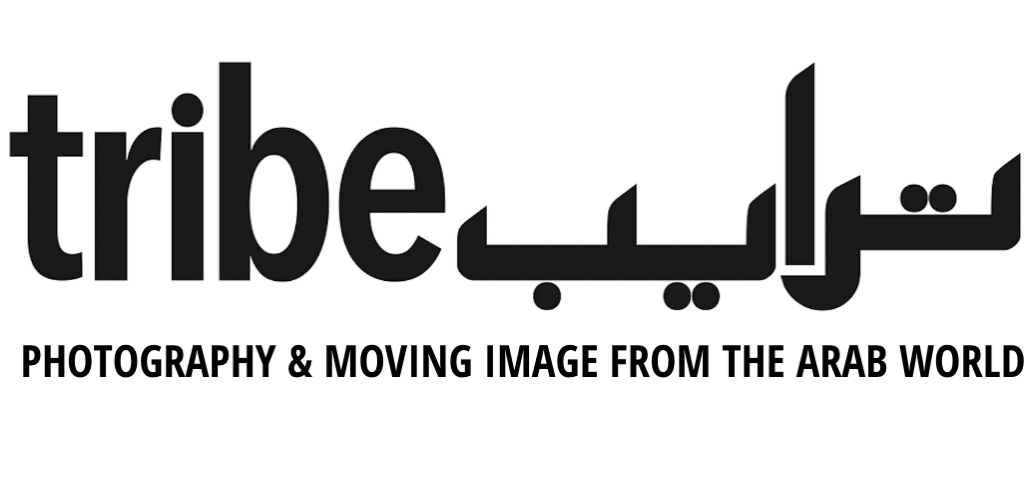Memory Box: An Interview with Joana Hadjithomas
Joana Hadjithomas and Khalil Joreige, Memory Box still. Courtesy of Haut et Court, Abbout Productions, and Micro_Scope.
With text by Hind Mezaina.
The film Memory Box, by artists and filmmakers Joana Hadjithomas and Khalil Joreige, is about the images and collective history that are not found in official history books. It is also steeped with their older artworks like Postcards of War, Lasting Images, and Two Suns in a Sunset, which viewers familiar with their work will instantly recognize.
Maia (Rim Turki) lives in Montreal with her teenage daughter, Alex (Paloma Vauthier). On Christmas Eve, they receive an unexpected package of notebooks, tapes, and photos that Maia had sent to her friend in France in the 1980s. Reluctant to confront past memories, Maia refuses to open the box, but Alex secretly dives into it and begins to learn about her mother’s adolescence during the Lebanese civil war.
The film is based on actual correspondences that Joana Hadjithomas had sent to her friend in France during her teenage years in Beirut and the civil war, between 1982 and 1988. She got hold of them twenty-five years, giving her access to an archive of journals, photos, audio tapes, and her past self, whom she did not recognize.
In an age where Facebook’s algorithm decides which of your old posts appears on your daily feed as a “memory," or where your iPhone alerts you to a “new memory” with a pre-assembled album of images, accompanied by stirring stock music, a film like Memory Box hits home the value of physical photos and journals, the importance of family history—especially for migrants and the diaspora—, and the question of what is passed on, said, and unsaid across generations.
I interviewed Joana Hadjithomas over Zoom. We talked about images, revisiting the past, and the making of the film.
Hind Mezaina (HM): In the film, we see Alex engaging with analog media, which she’s not very familiar with. What are your thoughts on the present state of image-making and image-saving?
Joana Hadjithomas (JH): While writing the script, Khalil and I thought a lot about the relationship that our daughter and her generation have with the smartphone. We didn’t want to be judgmental, as that wouldn’t be an interesting approach.
In the film, Alex reactivated the past. She rebooted and recreated it in another way, which we find very interesting. She's not just reading or looking at the images, she’s also photographing and animating them, doing something that is sensorial and textured with the images, and also creating a dialog between those images of the past and the images she’s making in the present.
This is something really important for us, it’s not about having a reaction to those images, or about them being better, it’s about their temporality and re-activating, today, something from the past to make something new. We’re not interested in nostalgia, we are interested in the present, and the effects of the images or events from the past in the context of the present.
HM: I keep wondering about current digital images and data that will get lost because of the rapid changes in technology.
JH: For this film, we produced more than 10,000 images, recreating old images with the cast. While we were making them, our daughter made 66,000 images with her phone. So, even if the film is about transmission, and what you do with history and your stories, how do you transmit these? The film asks exactly the same questions you’re asking about data and memories.
We make so many images today, but how do we process them? Do too many images prevent you from having a memory? This abundance of images could fracture your relationship to memory, because how are you going to archive them and find them in their multitude?
Khalil’s phone was stolen recently. He thought he saved everything on his iCloud, but not everything was found or recovered from there. So, suddenly, he had lost a year-and-a-half’s worth of images. It’s very strange, because these images feel orphaned. He was not really going back to them. They were stored digitally and became virtual memories, while physical photos are present because of their materiality.
HM: Can you talk about the writing and editing process for the film?
JH: We had a lot of material to work with and Khalil and I had two possibilities as artists. We could make either an installation or a documentary out of this material. But, we soon felt that these weren’t the right options, because even if the material was interesting for its detail, it was less so in content. The writing itself was not exceptional.
Two things were really striking, though. First was the fact that you could read all this material but not precisely understand what was happening historically. Second was that when one talks about war, it’s usually about the trauma; but in my case, I was writing about having fun, dreaming, loving, and living. It was another way to talk about the war, because during a war, you continue to live your life and films don’t usually show that.
We both worked a lot on the idea of what do you do with elements that are not considered traumatic—in the interest of making something different, but without sidelining the trauma. We needed someone to write with us, and for the first time we worked with a scriptwriter, Gaëlle Macé. In a way, she was Alex, because didn't know anything about Lebanon, the way we lived in the 80s, or those years of war and conflict.
We wanted to include artistic experimentations inside the story, because as artists and filmmakers, it was very important for us to show something different and merge our art into the film. People who know our work will immediately recognize the work we made as artists in the film; and hopefully notice, too, that we wanted to watch the dialog between the two unfold.
The completed script was never shared with the actors, so the editing process was also a way for us to re-compose and re-compile the film. We’ve always worked with the same editor, Tina Bass, who’s edited all our artwork, too. While we were in the editing room, we had a table where we filmed the photos, so the shooting and editing process were very linked.
We filmed in 2019, and when we started editing, Lebanon was in a terrible state of economical, political, and social collapse. Then it culminated with the blast, at which point we were still working on the film, and which started to take another dimension as a result, because a lot of what you hear in the recorded voice overs in the film echoed the present in a very disturbing and moving way.
HM: Did the tragedies of 2020 in Lebanon shape or change the ending of the film? I found the ending admirably optimistic.
JH: The location at the end of the film was blown away by the blast. While we were finishing the film, we asked ourselves how to end it because we were in a state of huge despair and sadness. We didn’t want to add more despair, but we had to find a way that was a record of the place and to find some hope, which is why we ended with the song “Let There Be Light,” by the Lebanese band, Bunny Tylers.
We worked on an ending that encompasses joy and sadness. The joy comes from friendship, because in our experience, with everything that we lost in Lebanon, it's the friendships that remain. At the end of the film, you see the characters as survivors, and I felt that this was the right ending. It’s also because Khalil and I want to make images and representations that feel closer to us compared to what is usually depicted in the Western media. There’s the official history and there’s also what Khalil and I refer to as anecdotes—the hidden stories that represent many of us and are important, because these hidden histories confront the history of the “winners” in our country, the corrupt politicians.
HM: Do you think that going through archives, especially personal ones, is a form of consolation and helps to better understand the present?
JH: When I was younger, I was very tough and always in fighter mode. I feel I'm still a fighter now, but I also feel that others and I need consolation, for strength. This consolation can come from friends and an expansive community, which includes you, me, and people everywhere that share a common love of art and cinema.
HM: I feel now old enough to say that history repeats itself and everything feels cyclical. What do you think about this?
JH: What has helped me and Khalil in the past year is that we were already working on a project called On Conformities, which is about archaeology and geology. Bringing archaeological and geological time to the surface for us to try to understand the past—it's always about disasters, catastrophes, and collapses; but especially in geology, you also see there are moments of regeneration.
For us now, when we meet friends from all over the world, Lebanese and Arabs in general, we share a lot of sadness. They come up to us and say everything is the same, everything is being repeated. But I feel that maybe it just takes time and that regeneration is coming. There are also times when I do feel that it’s impossible and the cycle keeps repeating itself. When I was listening to the tapes, and taking exact sentences that I wrote in the 1980s to write the voice overs for the film, a lot of the material fit with the present situation.
HM: The film does speak to the experience of migration and exile, but not in a way that is typically expressed in film.
JH: Yes, it talks a lot about exile and families that are scattered and far from their culture and country. We see very clearly in the film that the grandmother doesn't know how to speak French and doesn't relate to this culture, that she lives in a virtual Lebanon somewhere. When we toured with the film, from Canada to Portugal and many other places, I saw so many Lebanese in the audience who had just arrived as new immigrants. It was very moving.
Additionally, the idea of image and experimentation is very important to us in the film. There are big questions being asked today about the state of cinema and film, especially with the rise of streaming platforms. But when we worked on this film, we worked on the texture of the film and with the intent of showing it on the big screen. It was very liberating to see audiences all over the world responding to and accepting the idea of experimentation. To be able to experiment and say what you want through a story with actors, and having the freedom to be more creative in the way that you say it—maybe that, to me, is the most interesting part of the film.
